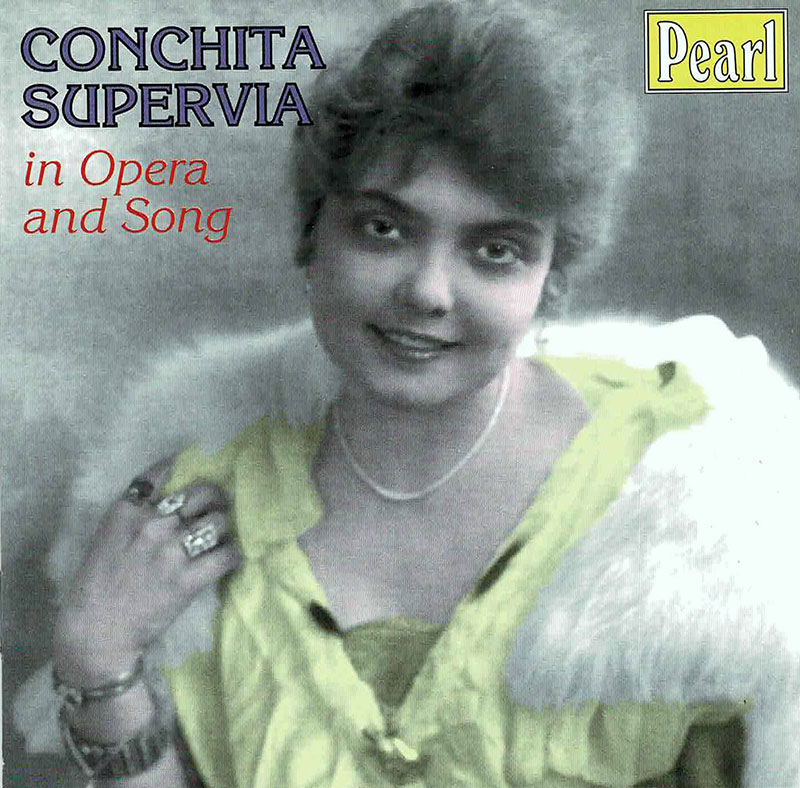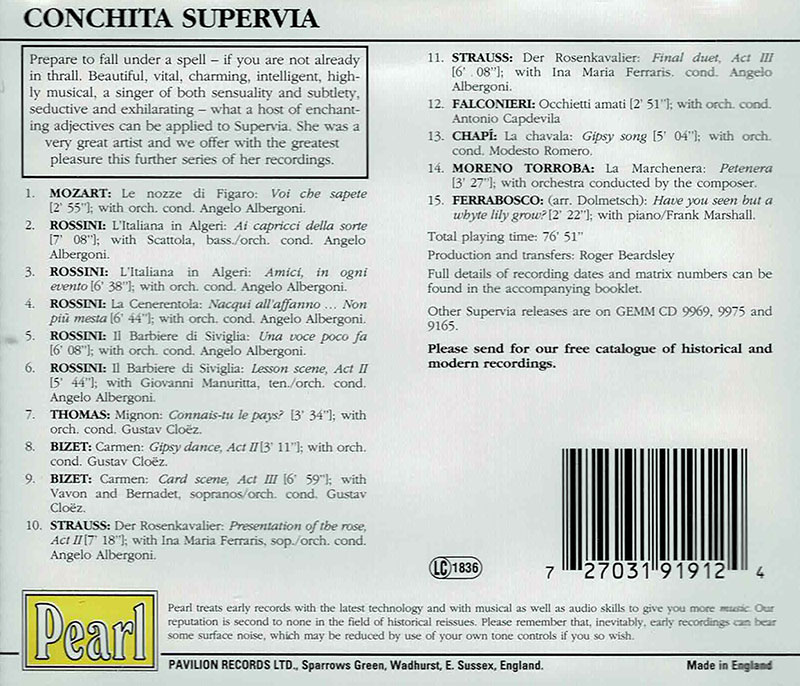Logowanie
Mikołaj - ten to ma gest!
Elton John, The Mamas & The Papas, Cat Stevens, Rod Stewart, Bobbie Gentry, Stevie Wonder, Engelbert Humperdinck
Memory Lane
Edycja Numerowana - 1000 egzemplarzy w skali światowej
RACHMANINOV, Eiji Oue, Minnesota Orchestra
Symphonic Dances / Vocalise
Best Recordings of 2001!!! NAJCZĘŚCIEJ KUPOWANA PŁYTA Z RR!
Karnawał czas zacząć!
Music of Love - Hi-Fi Latin Rhythms
Samba : Music of Celebration
AUDIOPHILE 24BIT RECORDING AND MASTERING
CHOPIN, LISZT, DEBUSSY, DVORAK, Gerhard Oppitz
Dances romantiques - A fantastic Notturno
Wzorcowa jakość audiofilska z Clearaudio
Winylowy niezbędnik
ClearAudio
Double Matrix Professional - Sonic
najbardziej inteligentna i skuteczna pralka do płyt winylowych wszelkiego typu - całkowicie automatyczna
STRAUSS R., ROSSINI, MOZART, BIZET, Conchita Supervia
In Opera and Song

- Conchita Supervia - soprano
- STRAUSS R.
- ROSSINI
- MOZART
- BIZET
5 star 0 out of 5 starsA tribute to a great, but sadly short-lived artist 14 July 2015 Format: Audio CD Pearl has a justifiable reputation for its historical classical recordings. Within its catalogue are five CDs devoted to the Spanish soprano Conchita Supervia, 1895-1936, that include little overlaps. Only two of the sixteen tracks on this CD devoted to the artist’s opera recordings, both from her performance of Carmen in 1930, have been included in other CDs. The singer’s reputation was enhanced by her good looks, as can be seen from the cover photograph, vivacious personality, characteristic vibrato and extensive recorded legacy. Unfortunately her tragic early death in childbirth added to her fame. On this CD there are seven excerpts from Carmen [1930 and 1931, including three with the Corsican lyric tenor Gaston Micheletti, 1892-1959, and one with the sopranos Andrèe Vavon and Andrèe Bernadet], Samson et Dalila [1927], Ambroise Thomas’ Mignon [1929, with the Italian bass Vincenzo Bettoni, 1881-1954], Faust [1931], Humperdinck’s Hansel and Gretel [1928, with Ines Maria Ferraris, 1882-1971], two from L’Italiana in Algieri [1927, with the bass Antonio (possibly Carlo) Scattola, 1878-1947, and with Scattola, Bettoni and the tenor Nino Ederle, 1892-1951], La Cerenentola [1929, with Bettoni], Le Nozze di Figaro [1928] and La Bohème [1931]. With the exception of Musetta’s waltz song, sung in French, where Supervia’s voice does not match the flighty nature of the character, the excerpts all capture the artist in excellent and enticing voice. Carmen was one of the singer’s most famous roles due to her powerful mezzo voice, expressiveness and allure, and one hears the teasing nature of young woman. Supervia’s 1925 debut at La Scala was in Hansel and Gretel, alongside her friend, Ines Maria Ferraris [the Sophie in Supervia’s 1911 debut] and the two are heard three years later in the Dance duet. A photograph in the brochure shows the singer as a rather gamin Hansel. The early recording of Dalila’s ‘Printemps qui commence’ is sung in Italian and the familiar music, even more familiar when the recording was made, is given added breadth allowing the character’s seductiveness to ooze out. The Swallow duet from Mignon, sung with Bettini, offers tenderness and joy, whilst the Rossini excerpts demonstrate the singer’s assuredness and control in repertoire that she also made her own. The last phase of her career was mainly devoted to recitals and concerts, with her operatic performances mainly centering on Carmen and La Cenenterola. The brochure text by Roger Beardsley, who also produced and transferred the original recordings describes the singer’s career [she made her debut at the age of 15 and, a year later, sang Octavian in Der Rosenkavalier; it was not until 1927 that she began her recording career]. He explains the reasons for the public’s response to her singing. In a second text Beardsley describes her recordings and the transfer processes. This is an excellent CD even if, so some, the voice takes a little time getting used to.





























